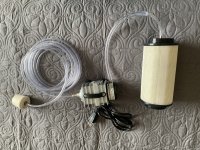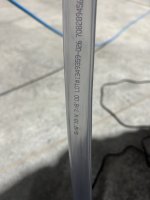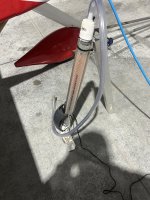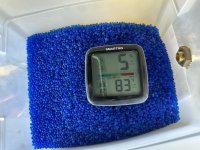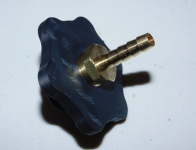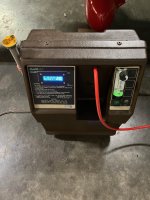Excuse me, I misspoke. I actually use 15 lbs of desiccant in the chamber. They come in 7.5 lb containers so I use two at time. Depending on ambient relative humidity, they last about 2-3 months. Longer in the winter, shorter in the summer. The stuff turns pink when is reaches saturation, and as it turns pinker I see the humidity in the desiccant chamber go up. I have two additional containers of dessicant, so when the 15 lbs in the chamber turns pink, I pour it out, replace it with the other 15 lbs, and take the pink stuff home to cook in the oven. I put it in a roasting pan at 250°F for about two hours, stir it every so often, and it turns it back to blue. The desiccant I have now has held up fine in this routine for the last 3 years. I use that much (15lbs at a time) so that I don't have to change it out as often. My wife has actually taken over that cooking job, based on her observation that I tend to spill silica beads around the kitchen. Those little suckers do escape quite readily and then bounce a long way on the tile floor of the kitchen. (I've also tried to demonstrate that I don't know how a vacuum cleaner works, but she isn't falling for that one).
I do note that when I was using a higher volume aquarium pump (350 gph) as air source, I had to change the silica more frequently. The one I use now is about 250 gph and is adjustable for output. I don't think it takes a high rate of airflow to do the job.
Mine pumps air in from the bottom through an aquarium stone as filter to keep beads out of the tubing (which is a pain). I don't have a HEPA filter on the output tubing...good idea but I haven't gotten around to it. I will say that in the five Blackstone reports I have, no report of silica has come up despite the fact that it is pumping this air directly in through the oil dipstick tube.
View attachment 56076



